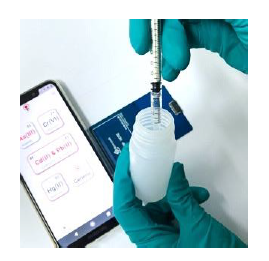An Innovative Toxic Heavy Metals Monitoring Product Development for a Sustainable Industry: A Case Study of Smartphone-Based Electrochemical Analytical Device
Keywords:
Smartphone-based electrochemical device, Toxic heavy metals quantification, Industrial buyer innovation adoption, Environmental waters, Industrial sustainabilityAbstract
The understanding of Smartphone-Based Electrochemical Analytical Device (SEAD) development for monitoring heavy metal contaminants in wastewaters from industrial manufacturers contributes to environmental sustainability. The herewith-presented applied research of six case studies in Thailand is aimed to preliminarily scrutinize the industrial user’s willingness to adopt the novel SEAD technology for monitoring a sustainable environment. This research employs the practical application of scientific methods and the concurrent triangulation strategy of integrating Quality Function Deployment (QFD) with a qualitative approach based on in-depth interviews. SEAD prototype was developed to test with lead and extreme users to assess their adoption determinants as well as the product’s performance. The proposed SEAD was successfully applied to the determination of As(III), Cd(II), Pb(II) and Hg(II) in standard samples. A real wastewater sample from a battery manufacturer exemplified an effective detection of four metals. The results demonstrated rapid, economical, reproducible, and reliable analytical capabilities of SEAD, which will be useful for sustainable industrial wastewater screening. Analysis of data from industrial user interviews revealed that industrial buyer innovation adoption (IBIA) determinants, which are seller, buyer organization, individual user, technological innovation and external environments impact SEAD adoption. This research contributes to the understanding of SEAD’s transition from scientific knowledge into sustainable technology and diffusible innovation.

